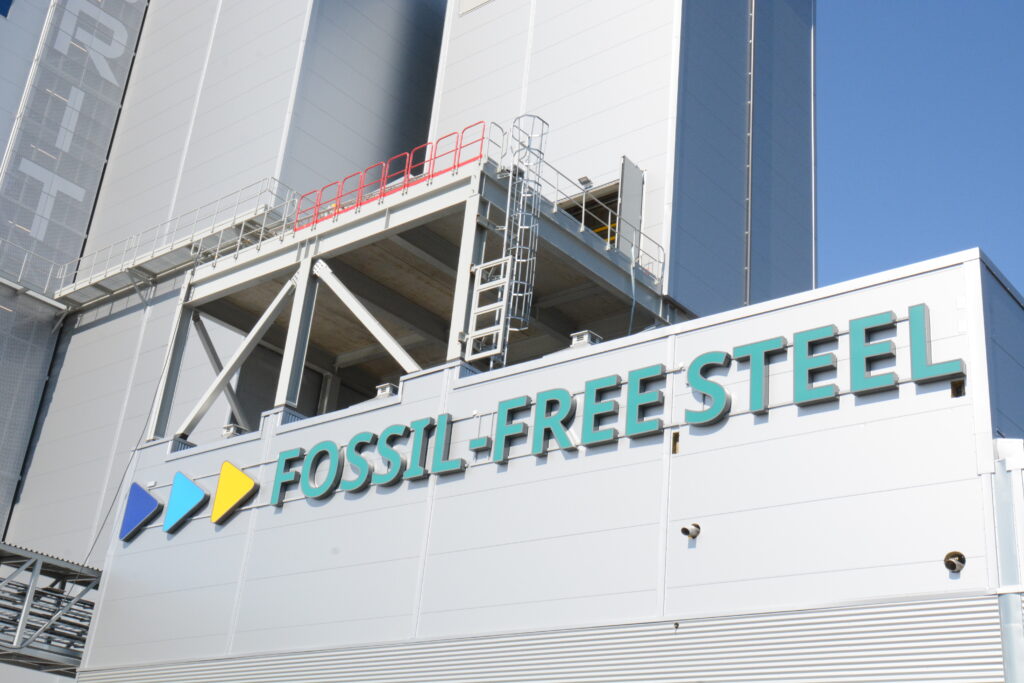As investors & politicians meet today in Berlin to discuss rebuilding a Ukraine freed of Putin’s psychopathy, innovators at Oxford University say low-carbon steel made in the country could generate billions of dollars for the nation’s growth.
In new research published in the Journal of Cleaner Production, they show that electrifying Ukraine’s steel sector to have near zero emissions would generate $164 billion worth of additional gross value added, compared to a pathway based on traditional coal-based steelmaking.
Electrifying eastern Ukraine’s coal-fired forges to run on low carbon renewables could radically also shift the nation’s steel industry from the coal fields of the Donbas towards western and southern regions, and accelerate economic growth.
Robust production of green steel would have ripple effects across Ukraine’s entire economy, argues lead author Dr Alli Devlin, from Oxford University’s Department of Engineering Science
“The vast destruction of Ukraine’s iron and steelmaking assets represents a stark opportunity to rebuild a thriving industrial sector which is independent of fossil fuels”, writes Dr Devlin.
“Ukraine is well positioned to supply European green steel markets, which will provide employment throughout the value chain, and deliver returns to the economy well beyond the original investments.”
Steel makes up a big chunk of Ukraine’s economy. Before Putin’s psychosis, its 21.4 million tonnes produced in 2021 ranked Ukraine as the world’s 14th biggest producer. But its steel is among the world’s dirtiest, with 2020’s 48 Megatonnes of CO2 equivalent, making up 15% of the country’s entire carbon emissions.
Ukraine wants to join the Eurpoean Union. When it succeeds, it will become subject to the trading block’s EU Green Deal’ target, which mandates for steel at near zero emissions by 2030.
Curiously, south Wales nurtured eastern Ukraine’s early history of producing iron, then steel in industrial volumes, first for Imperial Russia, then for the Soviet Union.
Donetsk, capital of the Donbas coalfield, was named Yuzovka for nearly 50 years until 1919, in honour of Merthyr Tydfil-born John Hughes. Hughes was the forgemaster who sailed from Britain in 1869with over 100 of his countrymen, miners and skilled iron smelters, to set up one of Imperial Russia’s first high-volume iron furnaces.
A Welsh-speaking community in eastern Ukraine with an English-language school and churches dedicated to saints David & George, prospered until 1919. In that year Russia’s new Bolshevik government nationalised the town’s iron works, forcing many families to return to Wales.
So great was Donetsk’s affinity with Britain that, after Putin’s annexation of the Donas region in 2014, locals even jokily campaigned to have Britain assume sovereignty of the city, in view of the region’s debt to John Hughes.
In their new paper, Dr Devlin & colleagues suggest new electrified steel mills should be situated close to cross-border rail hubs and close to the best sources for solar & wind energy.
This strategy would significantly increase demand for land and sea transport services, re-routing them towards Western/EU markets, and also create new demand for the production of green hydrogen and green ammonia for fossil-free fuels.
The report lays out an investment bill of $62 billion over 20 years for Ukraine’s full recovery in steelmaking: $46bn for renewable energy kit, $7bn for energy storage, and $9 billion for electric furnaces. Based on recent performance, the team believe every $1 invested in Ukraine’s basic metals industry would yield an additional $3.28 elsewhere in the economy.
The World Bank estimates that Ukraine’s full post-war recovery and reconstruction needs will require $486 billion.
The Oxford paper says Ukraine’s green steel requirements amount to only 6% of the country’s total $486 bn post-war reconstruction bill, as calculated by the World Bank for the nation’s first decade free of Russian attack.
Ultimately, says the paper, Ukraine could provide the world’s template for the urgently needed transition towards low-emission steel . Now comprising around 8% of total global emissions, steel ranks top of all human production sectors, at 2.8 Gigatonnes of CO2 per year. In comparison, air transport accounts for only 2.5%.
The war-ravaged country last year outranked England in the new capacityof onshore wind capacity which it commissioned.
With prospective international donors and private investors gathering in Berlin today and tomorrow for the Ukraine Recovery Conference 2024 , the Oxford researchers hope that green steel will be high on the agenda.
“This research is not just another feasibility study”, declared report co-author Dr Vlad Mykhnenko, the university’s associate professor of sustainable urban development.
“It is a call to action for steelmakers, investors, and politicians to ensure that after the war we really build back better.
“Green steel would become a sustainable growth promotion machine for Ukraine’s post-war development, and would generate almost twice as much economic growth than the traditional coal-based steel. This means more income and higher living standards for all Ukrainians”.
Through its research commercialisation arm Oxford University Innovation, Oxford is the number one filer of patents among Britain’s universities. It’s ranked first in Britain too for commercial spin-offs, having created more than 300 new companies since 1988. Over a third of those have sprung into life since 2019.




